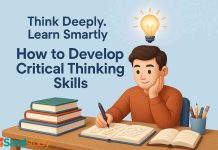Traditional education ensures a classroom full of students which is a part that is not present in online learning. Though, technology has made it possible to affect this environment. Therefore bridge the gap between school and college by enabling a connection to a wider community to share resources and assist one another, virtual-learning allows an interactive approach irrespective of geographical location. Through providing access to global instructors and exposure to countless invaluable resources to facilitate learning, students can learn through their peers whilst developing a more in-depth and critical understanding.
Now, we are facing a high recession, there is unemployment everywhere. All educational institutes have been closed due to this current pandemic. This addition led to a major disturbance to the public education system. According to The Print, about 320 million students were affected due to this current pandemic in India. Now, it is nearly impossible for a scholar to attend their classes physically. Therefore, due to current situations, the gap between the schools and students is getting more comprehensive day-by-day.
The 21st century is the age of technology and this technology has affected education on a large scale. Today, from the workplace to the classroom, scholars are having the advantages of online courses, training modules, or the mixture of both online and offline learning, which is called blended learning. But, sometimes we become so engaged in online learning that we ignore those human learners who are on the other side of that computer screen. But true education is that which should be allowed without disrupting the rights of others. Hence, the best education system should be intended as such which must try to bridge the gap between our learners. The users of our content, and the online learning technology we use in our studies.
To assure that education is not allowed due to the pandemic, the government started the ‘Pradhan Mantri e-VIDYA’ initiative. Under this comprehensive initiative, digital education will be given through multi-media modes that combine online teaching through the internet, radio, TV channels, and podcasts. Additionally, by the ‘DIKSHA’ scheme e-content and QR-coded textbooks will be given for all grades. The scheme will also have extraordinary e-content for visually and hearing-impaired students. But, certain issues need to be taken into account for the successful execution of the program, such as:
- Teacher-student gap: India possesses a low teacher-student ratio and it intends that the small number of teachers are overburdened. Virtual learning has only added to the burden. Several teachers say that developing content for online classes is time-consuming and coming up with innovative ways to keep students involved virtually is challenging. Steps should be taken to increase teacher strength.
- International standards courses: Students who wished to study abroad are now seeking admissions in institutes in the country. While this is a suitable time to stop the brain drain, we need to develop relevant courses of international standards, so that the purposes of such scholars are met.
- Technological advancement: Digital adaptation in education will be proving many opportunities for students and educators to learn through myriad platforms and enhance their skills. This will make the youth future-ready, which would have been a more moderate process with traditional classroom learning. But, the unavailability of high-speed internet and the lack of digital skills of teachers require it to be pleaded.
- Engaging content: Our education system requires more getting up. The syllabus requires to be updated to provide today’s requirements and demands. Currently, there is more focus on the theoretical part with teachers reading out the concepts orally. Though, there is a need to focus more on the practical features and skill-building. There are many pleasant resources available and we want to include them in our education method too to make learning more interesting while educational institutions are closed.
Why opt for online learning?
Nothing can really match the experience of face-to-face classes. But, virtual or online learning presents a collection of new learning opportunities.
In an online learning plan, teachers leverage interactive tools and technologies that assist foster online student engagement. Being capable to interact with data and information on the screen aids students to learn as well as learn concepts better.
Accessories such as user interfaces or applications and hands-on learning exercises. It can be practiced to introduce interactivity into the course element. Virtual labs or simulations performed can augment student’s engagement, and assist them to understand difficult subjects in a simple way.
There has been a time when questions occur in the quality of education when conducted online. The reality is, by online learning students have a way to world-class faculty. The purpose of conducting online classes isn’t new to international universities.
The pandemic has easily acted as a catalyst to promote online education. Unlike physical classes, online learning gives different channels such as mail, online chat, and video conferences, by which learners and instructors can communicate with each other. Online learning runs community engagement that improves the exchange of new ideas behind boundaries.
Learning should never stop, and technology is the most suitable channel for that. There are new-age facilities such as artificial intelligence, deep learning, and data analytics. It requires regular training to assure students remain up to date with industry needs. This can be executed through online learning.
Different ways through which Online Education Filling the Gaps
Accessibility of content
The dropout rate in India is at a depressing 57% according to a recent report which is uniquely placed in the world as having a low enrolment and a high dropout percentage. The main reason behind this is the absence of teachers with the unavailability of sturdy education infrastructure. Due to which the online education system grants students an ever-expanding information base, connecting them to a pool of experienced knowledge providers and enabling the smooth exchange of material.
Affordable courses
Online courses are usually cost-effective as the fees charged by them are lower than the fee paid in a brick and mortar school. As these courses’ providers do not acquire maintenance costs in terms of land, property, and building. Even the study material provided in these online courses are affordable as well as environmentally beneficial. With this, it also eliminates the expenditure on accommodation that a student would have faced otherwise.
Convenient schedule to study
While sitting in the comfort of their home’s students can understand the complex theories by opting for a digital mode of learning. As it saves the time that would have been wasted on going to and fro from the colleges. As well as, online courses can also be useful for individuals who are working and interested in adding a new degree to their resume.
Further, it allows students to access information according to their convenience as it does not bind students with a rigorous time-frame. Hence, in times like these with all the schools and colleges shut, examinations postponed, completion dates pushed; online classes continue to run and students face no difficulty with it.
Multi-way communication
The students failed to get individual attention, as the traditional method of teaching was time-bound. The digital medium makes education a one-on-one procedure as disciples can continuously interact with experts. Further, this improved interaction allows students to clear their doubts, follow their coursework development, and distinguish improvement areas. Live classroom sessions and the conduction of webinars have given rise to peer-to-peer learning and prepare the students for different competitive exams.
In a nutshell, the online teaching techniques along with the establishment of the myriad technological improvements have played a key role in bridging the age-old socio-economic gap faced by the Indian education systems. Education is no longer a luxury rather an easily accessible entity.
Collaboration and facilitated-learning
It can still be difficult to team up and share ideas even though students have the presence of their peers inside a classroom. As classes not always provide for group work or enough time to participate in a discussion can sometimes hinder learning due to this lack of discussion. Whereas students can converse with each other outside of class, this discussion often needs to take place in real-time to allow time for questions and clarification of their thought process. It is through this discussion of thoughts and questions that students can work together to discover the things that they are learning while flashing new ideas. It is often during this back-and-forth process that students can fully hold topics and it is, therefore, vital for discussions to take place in a classroom setting.
A lack of discussion in class can sometimes cause traditional education to become a more solitary experience, thus virtual-learning makes it possible to bridge this gap by creating a space for this conversation to take place. Students can converse in real-time as they learn through an online chat platform or social media. This makes it possible for them to share ideas and thoughts which will not only ease their learning but will also support a deeper understanding of topics. Technology offers many opportunities for students to collaborate without having to interrupt a teacher in a classroom or become worried about a time limit. This is something that can also allow students to connect with their peers and tutor one another, which is essential in getting success. Classroom settings can often prevent this and virtual-learning is therefore vital.
Shifting the focus from teacher to student
Virtual-learning shifts the weight of learning onto the student rather than on the instructor, therefore it allows students to convey out their research and use their learning as a means to be more independent. A virtual education nurtures a well-balanced student and provides them with the right skills to go on to thrive within the workplace by letting students have the capacity to ease and be accountable for their learning. This will not only ensure efficiency and productivity but will also allow them to be engaged and go on to implement this within the workplace.
Students learn to pursue help or resources when experiencing difficulties, which will not only help to make them more well-informed but shifts the responsibility from the teacher to the student. By allowing the student to ask questions and clarify their understanding, it provides them with the ability to broaden their comprehension of subjects.
Education should cater to the needs of students as it is important for everyone. With the evolution of technology, it is now possible for students to distinguish their learning styles and inescapably go on to pursue these courses, whether in the form of blended learning or through a course that is only based online.
Eliminating challenges
Now students can attend classes from anywhere and anytime as online teaching and learning eliminated the challenges of time and place. They can receive immediate feedback and can learn from their mistakes with the help of an automatic grading system in an online setup. It also helps students to set reminders for their assignment deadlines.
What to look forward to?
The university programs traditionally have been based around the physical attendance of the students, while digital learning has continued to be a supplementary support instrument. Yet, there is always a way if you look for one. Due to the current situation, many academic institutions across the globe are adopting the online system of education. So to keep the class running teachers are using online tools to ensure that the next generation workforce develops the skills that they need.
To bridge the current gap in contact time with students several international universities have also begun online classes. In many countries (such as the UK, US, and Singapore) international universities have substituted in-person teaching with an online teaching-learning model.
A current declaration from the UK Home Office said that international students can start their courses online and join on campus by April 2021 and still be eligible for the graduate course. The pronouncement replicates the detail that most UK universities are keen to implement a mix of face-to-face and online teaching a “blended learning” approach. The UK Visa and Immigration Services have also restarted operations in a phased method in India.
To hasten the reduction of poverty and fuel the eradication of socio-economic inequality, education is often considered as a resource. Online education inclines to have a multiplier effect in society as it initiates self-reliance, encourages economic growth by enhancing skills, and improves the lives of individuals by providing them with opportunities. However, in India, the predictable education system has created an alarming gap between those who come from strong socio-economic backgrounds and the ones from economically weaker sections.
For a country which is set to become one of the youngest nations in the world by 2030, with around 140 million people projected to be in the college-age group, it is impervious to break the restraints of traditional methods and move towards a more affordable, reachable and convenient mode of teaching and learning. The modern-day technological commotions and availability of economical smartphones, computers, and the internet have made education inexpensive.
The figures of Internet users in the world
- Today there are almost 4.66 billion internet users in the world.
- In the past 12 months, the total number of internet users grew by 321 with more than 875,000 new users each day around the world.
- In many developing economies the number of internet users is growing at an annual rate of more than 7 percent.
- Almost 7 hours online each day is spent by an average global internet user according to a report.
- Added together, the world’s internet users will spend more than 1.3 billion years of social time online in 2020 alone.
- 91 percent of internet users use mobile devices to go online at least some of the time.
- In the world’s largest economies more than three-quarters of internet users go online via laptops and desktops for at least some of their connected activities.
Conclusion
An efficient online learning course created respectively with purposes including the brain’s preferences for recognition, organization, chunking, and patterns. It is important to recognize that the wanted learning outcomes cannot be achieved without motivated teachers. A responsive incentive system can stimulate essential motivation among teachers and support local initiatives. Administrators should be motivated and trained to function as leaders who can transform their schools. All these have to be complemented with a mechanism to give academic role building and training guidance for teachers.
Frequently Asked Questions
Q1. What does learning gaps mean?
Ans. The learning gaps can be said as the difference between what a student is expected to have learned at a particular grade level versus what they have really learned up to that point.
Q2. What are the challenges in Online Learning?
Ans. When comparing face-to-face learning with online learning you can look at the lack of human connection, absence of opportunities for collaborative learning, and teacher supervision in complex subjects like Mathematics and Science.
Q3. Do certificates of online courses count for employers?
Ans. It may differ from others perspective but nowadays certificates from MOOC courses can be very positive in a CV, as they also show that the person can take their own lead to learn new things.





